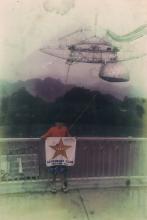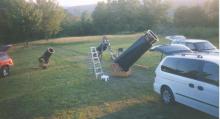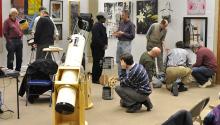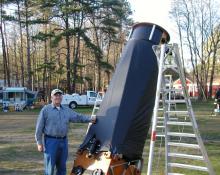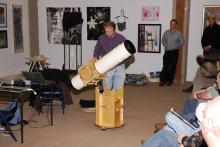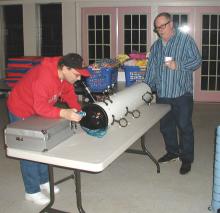Don't miss the meeting, coming up this week!
Feed aggregator
'Blob-like' home of farthest-known fast radio burst is collection of seven galaxies
In summer 2022, astronomers detected the most powerful and most distant fast radio burst (FRB) ever observed. Now, astronomers have pinpointed the extraordinary object's birthplace -- and it's rather curious, indeed. Using images from NASA's Hubble Space Telescope, the researchers traced the FRB back to not one galaxy but a group of at least seven galaxies.
Meteorite analysis shows Earth's building blocks contained water
Analysis of iron meteorites from the earliest years of the solar system indicate that the planetary 'seeds' that ultimately formed Earth contained water.
Final supernova results from Dark Energy Survey offer unique insights into the expansion of the universe
In the culmination of a decade's worth of effort, scientists analyzed an unprecedented sample of more than 1,500 supernovae classified using machine learning. They placed the strongest constraints on the expansion of the universe ever obtained with the DES supernova survey. While consistent with the current standard cosmological model, the results do not rule out a more complex theory that the density of dark energy in the universe could have varied over time.
Three iron rings in a planet-forming disk
Astronomers have detected a three-ringed structure in the nursery of planets in the inner planet-forming disk of a young star. This configuration suggests two Jupiter-mass planets are forming in the gaps between the rings. The detailed analysis is consistent with abundant solid iron grains complementing the dust composition. As a result, the disk likely harbors metals and minerals akin to those in the Solar System's terrestrial planets. It offers a glimpse into conditions resembling the early Solar System over four billion years ago during the formation of rocky planets such as Mercury, Venus, and Earth.
Space oddity: Uncovering the origin of the universe's rare radio circles
Astronomers believe they may have found the origin of the universe's giant odd radio circles: they are shells formed by outflowing galactic winds, possibly from massive exploding stars known as supernovae.





